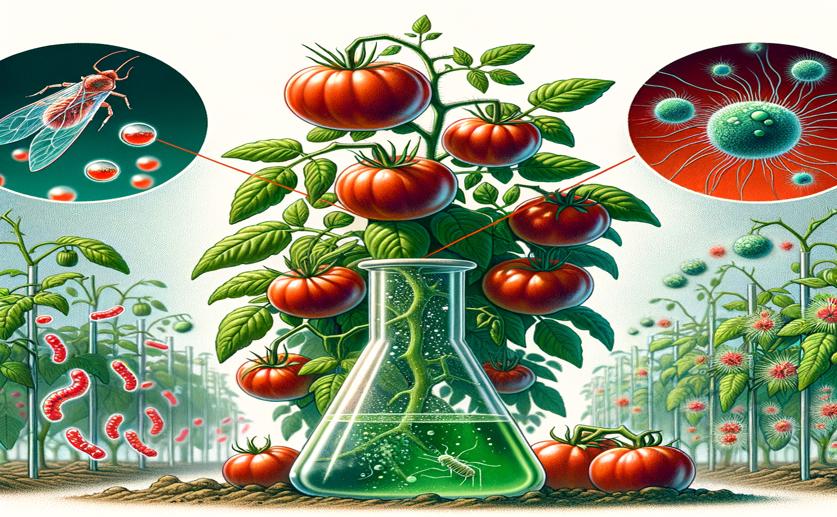
Combining Natural Plant Extracts with Bacteria to Control Tomato Pests
Greg Howard
25th April, 2024

Image Source: Natural Science News, 2024
Key Findings
- In a study by icipe, neem extract killed 93.79% of tomato pinworm larvae in just over a day
- Combining neem extract with Bacillus thuringiensis bacteria increased larval deaths to 99%
- This combination could lead to safer, more sustainable pest control in agriculture
SustainabilityBiotechAgriculture
References
Main Study
1) Interactions between Bacillus thuringiensis and selected plant extracts for sustainable management of Phthorimaea absoluta.
Published 23rd April, 2024
https://doi.org/10.1038/s41598-024-60140-4
Related Studies
2) Nutritional Composition and Bioactive Compounds in Tomatoes and Their Impact on Human Health and Disease: A Review.
3) Ecology, Worldwide Spread, and Management of the Invasive South American Tomato Pinworm, Tuta absoluta: Past, Present, and Future.
4) The evolution of multiple-insecticide resistance in UK populations of tomato leafminer, Tuta absoluta.
5) Control failure likelihood and spatial dependence of insecticide resistance in the tomato pinworm, Tuta absoluta.



 9th March, 2024 | Jenn Hoskins
9th March, 2024 | Jenn Hoskins